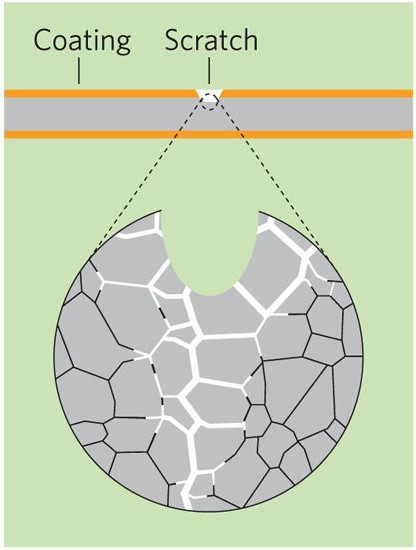Corrosion control
In this area, we critically examine some of the current hypotheses of anti-corrosion coatings, and aim to create self-healing coatings that can prevent or mitigate localized corrosion of metal structures.
Barrier coatings can retard corrosion by isolating underlying metal from reactive environments. Pinholes and other minor damages (e.g., cracks and scratches) only expose small areas of metal. However, reactions at these sites could develop into dangerous localized corrosion, which is often responsible for initiating catastrophic failures of metal structures, such as the collapse of the Silver Bridge in 1967, and the incident of fuselage cracking of Southwest Flight 812 in 2011.

Cathodic coating (e.g., tin plated steel) is not scratch-tolerant, and can accelerate local corrosion.
Since these defects are hard to prevent, predict or detect, responsive coatings that can self-repair would be very useful for mitigating local corrosion and better protecting metal. We would like to apply the new knowledge and new materials we have developed to address this difficult but important problem. The on-going work focuses on new strategies for making self-healing coatings that can fix local damages spontaneously without human intervention.
To evaluate protective coatings against local corrosion, we advocate new corrosion tests based on cogent metal properties (e.g., strength, toughness, fatigue performance and electrical conductance), in addition to those essentially only testing uniform corrosion (i.e., measuring the overall loss of mass in the metal).
Also see:
“A Cautionary Note on Graphene Anti-corrosion Coatings” Nature Nanotechnology, 2017, 12, 834-835
“Self-healing Microcapsule-thickened Oil Barrier Coatings” Research, 2019, Article 3517816
“Fluid-inspired material self-heals before your eyes”
C&E News: Liquid film self-heals and sticks to metals
News Atlas: Self-healing coating protects metals from corrosion